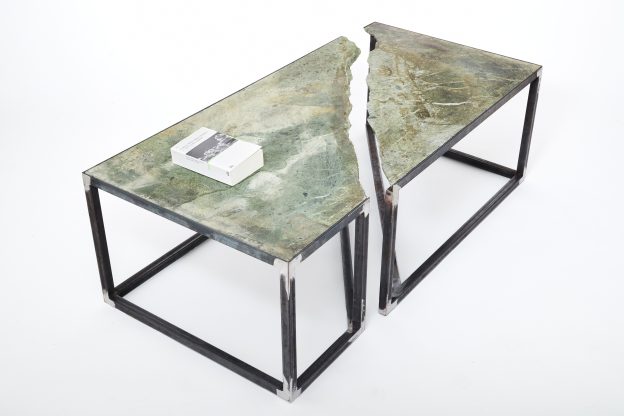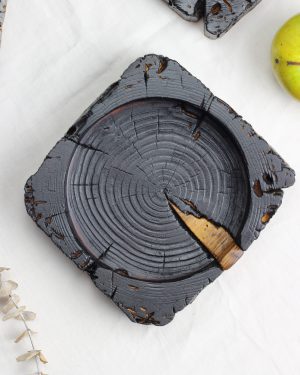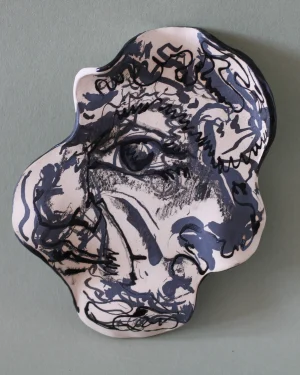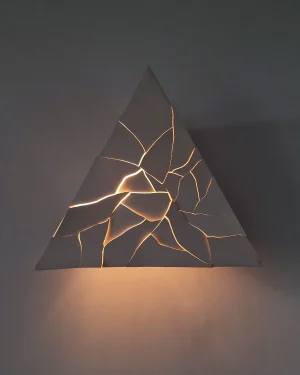
Wabi Sabi : Beautiful Foolishness of Things
In the poetic words of Kakuzō Okakura, the 19th-century art critic and author of The Book of Tea, he invites us to “dream of evanescence and linger in the beautiful foolishness of things.” His writing offers insight into Wabi Sabi, a philosophy too easily forgotten in a modern world focused on a relentless pursuit of perfection, youth and infallibility.
The Meaning of Wabi Sabi
The origin of Wabi Sabi can be traced back to 15th century Japan, where it evolved from two distinct aesthetic concepts – “Wabi” and “Sabi.” Initially holding separate meanings, “Wabi” referred to the beauty found in simplicity, solitude, and the unadorned. Wabi embodied a humble, rustic charm associated with a life in harmony with nature. Meanwhile, “Sabi” celebrated the beauty that comes with age, appreciating the weathering and aging of objects. As the notions of Wabi and Sabi converged over time, the comprehensive philosophy of Wabi Sabi emerged. Eventually, encapsulating a holistic aesthetic and philosophical approach that values the beauty of impermanence, simplicity, and the acceptance of the natural cycle of growth and decay.


What are the Origins of Wabi Sabi?
Wabi Sabi draws inspiration from the simplicity and authenticity of the ancient tea ceremony. Originally conceived as a practice for monks to stay alert during Zen meditation, the ceremony had strayed from its spiritual roots by the 15th century, becoming a flamboyant display for ruling shoguns. Enter Murata Shukō, regarded as the tea ceremony’s founder, who sought to restore its minimalist roots. In his influential “Letter of the Heart” (Kokoro No Fumi), Shukō advocated for a return to humble roots, emphasizing rustic ware and the deliberate inclusion of imperfections by Japanese artisans.
A century later, Sen no Rikyu, revered as the father of the modern tea ceremony and a master of Wabi Sabi, continued the quest for refinement. In a poignant anecdote from Rikyu’s life, he asked a disciple to clean his tea house diligently. After a day of labor, Rikyu inspected the meticulously cleaned space and, in a moment of inspired spontaneity, shook a maple tree overhanging the path. The cascade of leaves that fell brought Wabi Sabi to life, uniting the manmade and the natural, embodying artifice and random chance in a perfect expression of beauty and wisdom.
Rikyu’s dedication extended beyond this gesture, as he stripped away non-essential elements from the tea ceremony, using ceramics and other wares from rural environments and codifying movements to infuse Wabi Sabi at the core of the ritual. The tea ceremony, in essence, became an existential affair, fostering a sensitivity to the transience of things and deepening our connection with the natural world.




See More Like This: Visit Our Online Gallery of Wabi Sabi
Key principles of Wabi Sabi:
- Simplicity: Wabi Sabi embraces minimalism and simplicity in design, valuing the unpretentious and modest.
- Imperfection: The design philosophy celebrates imperfections as integral elements, fostering an appreciation for the beauty of irregularities.
- Asymmetry: The preference for asymmetry over perfect balance reflects a commitment to the natural and uncontrived, imparting a unique and biophilic quality to design.
- Appreciation of the Natural World: Wabi Sabi nurtures a deep appreciation for the fleeting beauty of the natural world, prompting designers to embrace the impermanence of all things and infuse their creations with a profound connection to the ever-evolving essence of existence.








Colors and Materials Associated with Wabi Sabi:
- Palette: Typically uses a palette that resonates with the raw beauty found in nature. It often features earth tones and neutral colors, as well as vibrant coastal shades of the sea, vital oranges of a sunset, and lush greens of the forest.
- Wood: Goes beyond aesthetics, symbolizing the timeless connection between humanity and nature. Imperfections like knots and grain variations are celebrated, adding authenticity to each piece.
- Stone: Embraces the solidity and time-worn character of stone. Imperfections, like textured, weathered, surfaces, serve as visual testaments to the passage of time and the material’s inherent charm.
- Clay: Embodies the essence of Wabi Sabi in pottery and ceramics, reflecting the harmony between artist and earth. Imperfections enhance the tactile experience, forging a deeper connection with the crafted piece.
- Bamboo: Exemplifies strength, flexibility, and simplicity. Imperfections, like nodes and color variations align with Wabi Sabi principles, promoting an appreciation for the unadorned and genuine.
- Textiles: Natural fibers, such as cotton and linen, showcase simplicity, durability, and an earthy aesthetic. They invite touch and engagement with the crafted object, strengthening a connection to the natural world.
- Metal: Weathered iron or rustic bronze contributes to the overall aesthetic, with the patina embodying impermanence and the passage of time.
- Paper: Traditional Japanese washi paper exemplifies fragility and strength. Imperfections celebrate transience and the handmade, adding a subtle and ethereal quality to crafts and art.




Techniques Associated with Wabi Sabi:
- Kintsugi: “The Art of Repair”, is a Japanese technique that turns broken pottery into a unique work of art. By mending cracked ceramics with a mixture of lacquer and precious metals, Kintsugi transforms breakage into a meaningful part of the object’s history.
- Mottled Surfaces and Texture: Wabi Sabi embraces the artistry of mottled surfaces and texture, showcasing the character found in irregularities and deliberately dismissing the pursuit of perfect symmetry in design.
- Natural Materials and Minimalism: The Wabi Sabi ethos prioritizes the use of natural, unrefined materials that age gracefully and condenses design to its essential elements.






Wabi Sabi Designers in Contemporary Design
In today’s contemporary art and design scene, a new wave of creators integrates Wabi Sabi’s essence into their works. Wabi Sabi’s relevance in today’s art world extends beyond aesthetics; it aligns with eco-friendly principles, standing against waste and fostering a conscious approach to creation. In navigating the dynamic landscape of modern artistic expression, these creators weave Wabi Sabi’s ethos into their works, embodying a profound aesthetic while championing sustainable values.
- Shoji Hamada: A celebrated Japanese potter, skillfully integrated Wabi Sabi principles into each clay creation, he revered the beauty of imperfections.
- Isamu Noguchi: This 20th-century sculptor focused on simplicity. His creations captured the power of the unadorned and the unpretentious.
- Traditional Japanese Craftspeople: Artisans across diverse disciplines embody Wabi Sabi, celebrating transience in their pursuit of enduring beauty.
Read Now: The Simple Elegance of Minimalist Design


Read Now: New Techniques: 10 Contemporary Ceramicists to Watch in 2024
Wabi Sabi’s Impact on Design Styles
- Scandinavian Design: Known for its minimalist approach, emphasis on functionality, and use of natural materials, Scandinavian design aligns with Wabi Sabi’s appreciation for simplicity and authenticity.
- Minimalism: A design movement characterized by simplicity, minimalism values function over form, echoing Wabi Sabi’s emphasis on unpretentious beauty and the elimination of the non-essential.
- Arts and Crafts Movement: Originating in the late 19th century, this movement emphasized craftsmanship, simplicity, and the use of natural materials, reflecting Wabi Sabi’s principles in its rejection of mass-produced, artificial goods.
- Japanese Zen Design: Rooted in Zen philosophy, Japanese design often incorporates Wabi Sabi principles, emphasizing tranquility, simplicity, and the beauty of imperfection.
- Mid-Century Modern: This design movement, prevalent in the mid-20th century, often incorporates clean lines, organic forms, and an appreciation for natural materials.
- Biophilic Design: Focused on integrating nature into the built environment, biophilic design shares common ground with Wabi Sabi in its celebration of the organic, imperfect, and transient aspects of the natural world.
- Rustic Design: Design styles that embrace a rustic, lived-in aesthetic often align with Wabi Sabi by incorporating imperfections, weathered materials, and a sense of simplicity.




Read Now: 20 Beautiful Ceramic Designs: Sculpt, Glaze, Fire
Conclusion
Amidst the complexities of modern life, Wabi Sabi extends an invitation to acknowledge and cherish beauty in life’s often overlooked elements—the transient, the weathered, and the imperfect. In a world increasingly enamored with the pursuit of perfection and inauthenticity, the practice of Wabi Sabi becomes more crucial than ever. It offers a counterbalance to the prevailing culture, reminding us that true beauty lies in the imperfect and authentic. As we tread the path of mindful appreciation, Wabi Sabi becomes not just an aesthetic philosophy but a guiding principle, urging us to find solace and richness in life’s beautifully imperfect moments. To once again quote Okakura, “Perfection is everywhere if we only choose to recognize it”.
-

 Cut High – Naked Stone€810 incl. tax
Cut High – Naked Stone€810 incl. tax -

 Cut Medium – Naked Stone€810 incl. tax
Cut Medium – Naked Stone€810 incl. tax -

 Marbled Dream #1 – Handcrafted Ceramic Plate€150 incl. tax
Marbled Dream #1 – Handcrafted Ceramic Plate€150 incl. tax -

 Marbled Dream #2 – Handcrafted Ceramic Illustrated Plate€150 incl. tax
Marbled Dream #2 – Handcrafted Ceramic Illustrated Plate€150 incl. tax -

 Marbled Dream #3 – Handcrafted Ceramic Plate€150 incl. tax
Marbled Dream #3 – Handcrafted Ceramic Plate€150 incl. tax -

 Matted Aluminium Coffeetable€580 incl. tax
Matted Aluminium Coffeetable€580 incl. tax -
Piece on sale

 Mira Luminaire€2.500 incl. tax
Mira Luminaire€2.500 incl. tax -

 Round Free-shaped Glass€200 incl. tax
Round Free-shaped Glass€200 incl. tax -

 Something Shifted In The Leaves – Sculptural Ceramic Vessel€615
Something Shifted In The Leaves – Sculptural Ceramic Vessel€615





